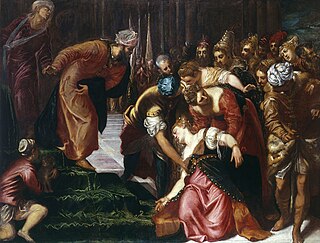
Ahasuerus is a name applied in the Hebrew Bible to three rulers and to a Babylonian official in the Book of Tobit.
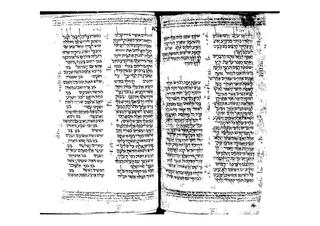
Nehemiah 1 is the first chapter of the Book of Nehemiah in the Old Testament of the Christian Bible, or the 11th chapter of the book of Ezra-Nehemiah in the Hebrew Bible, which treats the book of Ezra and the book of Nehemiah as one book. Jewish tradition states that Ezra is the author of Ezra-Nehemiah as well as the Book of Chronicles, but modern scholars generally accept that a compiler from the 5th century BCE is the final author of these books. This chapter describes Nehemiah's position in the Persian court and his piety.
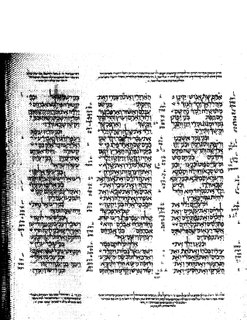
2 Chronicles 36 is the thirty-sixth chapter of the Second Book of Chronicles the Old Testament of the Christian Bible or of the second part of the Books of Chronicles in the Hebrew Bible. The book is compiled from older sources by an unknown person or group, designated by modern scholars as "the Chronicler", and had the final shape established in late fifth or fourth century BCE. This chapter belongs to the section focusing on the kingdom of Judah until its destruction by the Babylonians under Nebuchadnezzar and the beginning of restoration under Cyrus the Great of Persia. It contains the regnal accounts of the last four kings of Judah - Jehoahaz, Jehoiakim, Jehoiachin and Zedekiah - and the edict of Cyrus allowing the exiled Jews to return to Jerusalem.

Ezra 3 is the third chapter of the Book of Ezra in the Old Testament of the Christian Bible, or the book of Ezra-Nehemiah in the Hebrew Bible, which treats the book of Ezra and book of Nehemiah as one book. Jewish tradition states that Ezra is the author of Ezra-Nehemiah as well as the Book of Chronicles, but modern scholars generally accept that a compiler from the 5th century BCE is the final author of these books. The section comprising chapter 1 to 6 describes the history before the arrival of Ezra in the land of Judah in 468 BCE. This chapter focuses on the people's worship and culminates in the project to rebuild the temple's foundations.
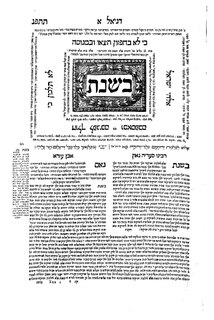
Ezra 4 is the fourth chapter of the Book of Ezra in the Old Testament of the Christian Bible, or the book of Ezra-Nehemiah in the Hebrew Bible, which treats the book of Ezra and book of Nehemiah as one book. Jewish tradition states that Ezra is the author of Ezra-Nehemiah as well as the Book of Chronicles, but modern scholars generally accept that a compiler from the 5th century BCE is the final author of these books. The section comprising chapter 1 to 6 describes the history before the arrival of Ezra in the land of Judah in 468 BCE. This chapter records the opposition of the non-Jews to the re-building of the temple and their correspondence with the kings of Persia which brought a stop to the project until the reign of Darius the Great.
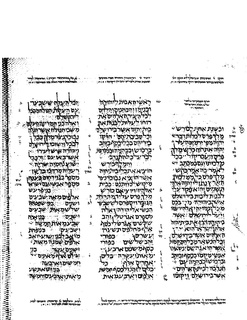
Ezra 5 is the fifth chapter of the Book of Ezra in the Old Testament of the Christian Bible, or the book of Ezra-Nehemiah in the Hebrew Bible, which treats the book of Ezra and book of Nehemiah as one book. Jewish tradition states that Ezra is the author of Ezra-Nehemiah as well as the Book of Chronicles, but modern scholars generally accept that a compiler from the 5th century BCE is the final author of these books. The section comprising chapter 1 to 6 describes the history before the arrival of Ezra to the land of Judah in 468 BCE. This chapter records the contribution of the prophets Haggai and Zechariah to the temple building project and the investigation by Persian officials.

Ezra 6 is the sixth chapter of the Book of Ezra in the Old Testament of the Christian Bible, or the book of Ezra-Nehemiah in the Hebrew Bible, which treats the book of Ezra and book of Nehemiah as one book. Jewish tradition states that Ezra is the author of Ezra-Nehemiah as well as the Book of Chronicles, but modern scholars generally accept that a compiler from the 5th century BCE is the final author of these books. The section comprising chapter 1 to 6 describes the history before the arrival of Ezra in the land of Judah in 468 BCE. This chapter records the response of the Persian court to the report from Tattenai in the previous chapter: a search is made for the original decree by Cyrus the Great and this is confirmed with a new decree from Darius the Great allowing the temple to be built. This chapter closes this first part of the book in a "glorious conclusion with the completion of the new temple and the celebration of Passover" by the people, as their worship life is restored according to the Law of Moses.

Ezra 7 is the seventh chapter of the Book of Ezra in the Old Testament of the Christian Bible, or the book of Ezra-Nehemiah in the Hebrew Bible, which treats the book of Ezra and book of Nehemiah as one book. Jewish tradition states that Ezra is the author of Ezra-Nehemiah as well as the Book of Chronicles, but modern scholars generally accept that a compiler from the 5th century BCE is the final author of these books. The section comprising chapters 7 to 10 mainly describes the activities of Ezra the scribe and the priest. This chapter focuses on the commission of Ezra by Artaxerxes I of Persia, and the start of his journey from Babylon to Jerusalem.

Nehemiah 2 is the second chapter of the Book of Nehemiah in the Old Testament of the Christian Bible, or the 12th chapter of the book of Ezra-Nehemiah in the Hebrew Bible, which treats the book of Ezra and the book of Nehemiah as one book. Jewish tradition states that Ezra is the author of Ezra-Nehemiah as well as the Book of Chronicles, but modern scholars generally accept that a compiler from the 5th century BCE is the final author of these books. From the time he hears about Jerusalem during the month of Kislev (November/December), Nehemiah waited until the month of Nisan (March/April) to petition Artaxerxes I of Persia to be allowed to go and help the rebuilding of Jerusalem. His petition is granted by the king, and although with less authority than Ezra over the officials of "Beyond-the-River", Nehemiah was given an official position with an escort of officers and cavalry.

Nehemiah 6 is the sixth chapter of the Book of Nehemiah in the Old Testament of the Christian Bible, or the 16th chapter of the book of Ezra-Nehemiah in the Hebrew Bible, which treats the book of Ezra and the book of Nehemiah as one book. Jewish tradition states that Ezra is the author of Ezra-Nehemiah as well as the Book of Chronicles, but modern scholars generally accept that a compiler from the 5th century BCE is the final author of these books. This chapter records the continuing opposition to Nehemiah from sources both external and internal.

Nehemiah 9 is the ninth chapter of the Book of Nehemiah in the Old Testament of the Christian Bible, or the 19th chapter of the book of Ezra-Nehemiah in the Hebrew Bible, which treats the book of Ezra and the book of Nehemiah as one book. Jewish tradition states that Ezra is the author of Ezra-Nehemiah as well as the Book of Chronicles, but modern scholars generally accept that a compiler from the 5th century BCE is the final author of these books. This chapter and the previous one focus mainly on Ezra; with this chapter recording Ezra's prayer of repentance for the sake of the people.

Esther 2 is the second chapter of the Book of Esther in the Hebrew Bible or the Old Testament of the Christian Bible. The author of the book is unknown and modern scholars have established that the final stage of the Hebrew text would have been formed by the second century BCE. Chapters 1 and 2 form the exposition of the book. This chapter introduces Mordecai and his adoptive daughter, Esther, whose beauty won the approval of the king Ahasuerus, and she was crowned the queen of Persia. Given information from Mordecai, Esther warned the king of an assassination plan, so that the would-be assassins were executed on the gallows, and the king owed Mordecai his life.

Esther 3 is the third chapter of the Book of Esther in the Hebrew Bible or the Old Testament of the Christian Bible. The author of the book is unknown and modern scholars have established that the final stage of the Hebrew text would have been formed by the second century BCE. Chapters 3 to 8 contain the nine scenes that form the complication in the book. This chapter introduces Haman the Agagite, who is linked by his genealogy to King Agag, the enemy of Israel's King Saul, from whose father, Kish, Mordecai was descended. The king Ahasuerus elevated Haman to a high position in the court, and ordered everyone to bow down to him, but Mordecai refuses to do so to Haman, which is connected to Mordecai's Jewish identity (as Jews would only bow down to worship their own God ; this indirectly introduced the religious dimension of the story. Haman reacted by a vast plan to destroy not simply Mordecai, but his entire people, getting the approval from the king to arrange for a particular date of genocide, selected by casting a lot, or pur to fall on the thirteenth day of the twelfth month, Adar. The chapter ends with the confused reaction of the whole city of Susa due to the decree.

Esther 4 is the fourth chapter of the Book of Esther in the Hebrew Bible or the Old Testament of the Christian Bible. The author of the book is unknown and modern scholars have established that the final stage of the Hebrew text would have been formed by the second century BCE. Chapters 3 to 8 contain the nine scenes that form the complication in the book. This chapter describes the reaction of the Jews to Haman's evil decree, focusing on Mordecai's action of mourning and fasting, which eventually forced Esther to take action on her own by risking her life to appear uninvited before King Ahasuerus.
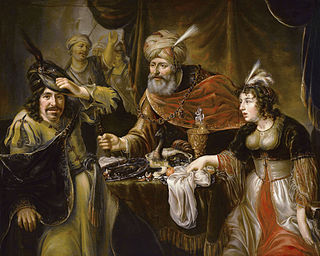
Esther 5 is the fifth chapter of the Book of Esther in the Hebrew Bible or the Old Testament of the Christian Bible, The author of the book is unknown and modern scholars have established that the final stage of the Hebrew text would have been formed by the second century BCE. Chapters 3 to 8 contain the nine scenes that form the complication in the book. This chapter records that Esther's risky behavior to appear uninvited before the king Ahasuerus is richly rewarded, because the king generously offers to give her whatever she wants, 'even to the half of my kingdom' (5:3), but Esther cleverly asks for nothing more than an opportunity to entertain her husband and his chief officer, Haman. Both men were pleased at her hospitality, but when the king again offers her half the empire, this time she requests only a second banquet. While Haman was happy to have been entertained by the queen, he became intensely distressed when Mordecai once more refused to bow down before him. Haman's wife, Zeresh, advised him to erect a monumental gallows intended for Mordecai, and only then Haman felt happy again to look forward to Esther's second banquet.

Esther 6 is the sixth chapter of the Book of Esther in the Hebrew Bible or the Old Testament of the Christian Bible, The author of the book is unknown and modern scholars have established that the final stage of the Hebrew text would have been formed by the second century BCE. Chapters 3 to 8 contain the nine scenes that form the complication in the book. This chapter relates how a sleepless Ahasuerus had his court annals read aloud and discovered that he had failed to reward Mordecai for passing on the information about the assassination plot. The episode leads to 'a marvellously ironic scene', as the narrative 'moves inexorably to its ultimate reversal', starting with Haman leading a king's horse carrying Mordecai, clothed in royal garb through the streets of Susa, and proclaiming the king's favor for Mordecai. Haman went home exhibiting mourning behavior and his wife predicted that Haman's intent to destroy Mordecai would end up with the opposite result.

Esther 7 is the seventh chapter of the Book of Esther in the Hebrew Bible or the Old Testament of the Christian Bible, The author of the book is unknown and modern scholars have established that the final stage of the Hebrew text would have been formed by the second century BCE. Chapters 3 to 8 contain the nine scenes that form the complication in the book. This chapter records the second banquet of Esther. The king Ahasuerus was then determined to grant her any request, so Esther spoke out about the death threat on her people and identifies Haman as the perpetrator of the projected genocide. The king went out to his garden in a rage, but shortly came back to see Haman seemingly threatening Esther on her recliner couch. This caused the king to command the hanging of Haman on the very gallows Haman intended for Mordecai.

Esther 8 is the eighth chapter of the Book of Esther in the Hebrew Bible or the Old Testament of the Christian Bible, The author of the book is unknown and modern scholars have established that the final stage of the Hebrew text would have been formed by the second century BCE. Chapters 3 to 8 contain the nine scenes that form the complication in the book. This chapter contains the effort to deal with the irreversible decree against the Jews now that Haman is dead and Mordecai is elevated to the position of prime minister.

Esther 9 is the ninth chapter of the Book of Esther in the Hebrew Bible or the Old Testament of the Christian Bible, The author of the book is unknown and modern scholars have established that the final stage of the Hebrew text would have been formed by the second century BCE. Chapters 9 to 10 contain the resolution of the stories in the book. This chapter records the events on the thirteenth and fourteenth of Adar and the institution of the Purim festival after the Jews overcome their enemies.
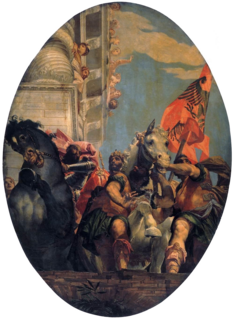
Esther 10 is the tenth chapter of the Book of Esther in the Hebrew Bible or the Old Testament of the Christian Bible, The author of the book is unknown and modern scholars have established that the final stage of the Hebrew text would have been formed by the second century BCE. Chapters 9 to 10 contain the resolution of the stories in the book. This chapter is an encomium to Mordecai, showing his power alongside that of the king, being a Jew as second in command to a Gentile king, serving the interests of both groups—Persians and Jews. It is a picture of an 'ideal diaspora situation' and 'serves as a model for all diaspora communities'.























